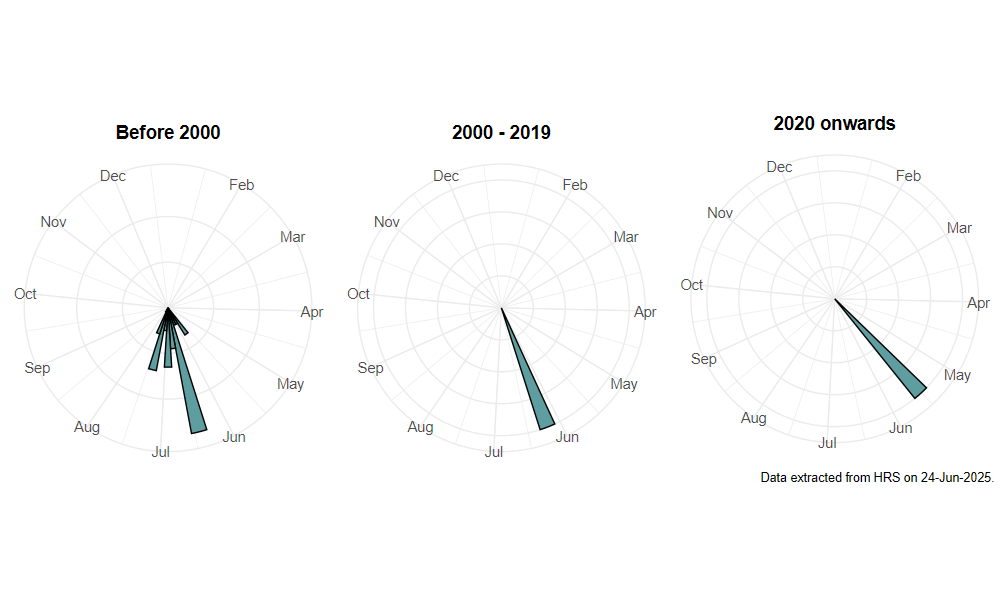Blera fallax (Linnaeus, 1758)
Identification
Identification difficulty = 1. ![]()
![]() according to Ball & Morris, 20241
according to Ball & Morris, 20241
Synonymy
Cynorrhina fallax (Linnaeus 1758) in Coe(1953)2.
Biology
Larvae occur in wet pockets of decay in large Scots Pine Pinus sylvestris stumps (minimum surface diameter about 40 cm). The natural breeding site is probably wet decaying pine tree roots. Larvae of several different size classes have been found occupying the same cavity, suggesting that they develop over 2 or more years. Adults appear to have rather a short flight period and have been found around pine stumps or visiting flowers such as Wild Raspberry Rubus idaeus.
Flight period
The following plots show the number of unique records per week excluding those reported to be of immature stages.

Status
CRITICALLY ENDANGERED - Ball & Morris, 20143. Endangered (RDB1) - Falk, 19914 & Shirt, 19875.
Distribution
Once known from a number of localities in Aberdeenshire, Moray and Inverness-shire. This species is now restricted to Strathspey, between Kingussie in the south and Grantown in the north. Recent surveys (2003-2005) by the Malloch Society have confirmed its presence at only two sites. This species is under active conservation. Iain MacGowan gave an account of the Malloch Society's woork in the Bulletin of the Dipterists Forum, Autumn 2008. More recently, captive breeding has ben carried out by a [Royal Zoological Society project]{https://www.rzss.org.uk/pine-hoverfly}.

-
Ball, S., & Morris, R. (2024). Hoverflies of Britain and Ireland. WILDGuides (3rd ed.). Oxford: Princeton University Press. ↩
-
Coe, R. (1953). Diptera: Syrphidae. Handbooks for the Identification of British Insects, 10(1), 1–98. ↩
-
Ball, S., & Morris, R. (2014). A review of the scarce and threatened flies of Great Britain. Part 6: Syrphidae. ( No. 9). Species status (pp. 1–130). Peterborough: JNCC. ↩
-
Falk, S. (1991). A review of the scarce and threatened flies of Great Britain. ( No. 39). Research and Survey in Nature Conservation (pp. 1–194). Peterborough: NCC. ↩
-
Shirt, D. (Ed.). (1987). Red Data Books: 2. Insects. Peterborough: NCC. ↩